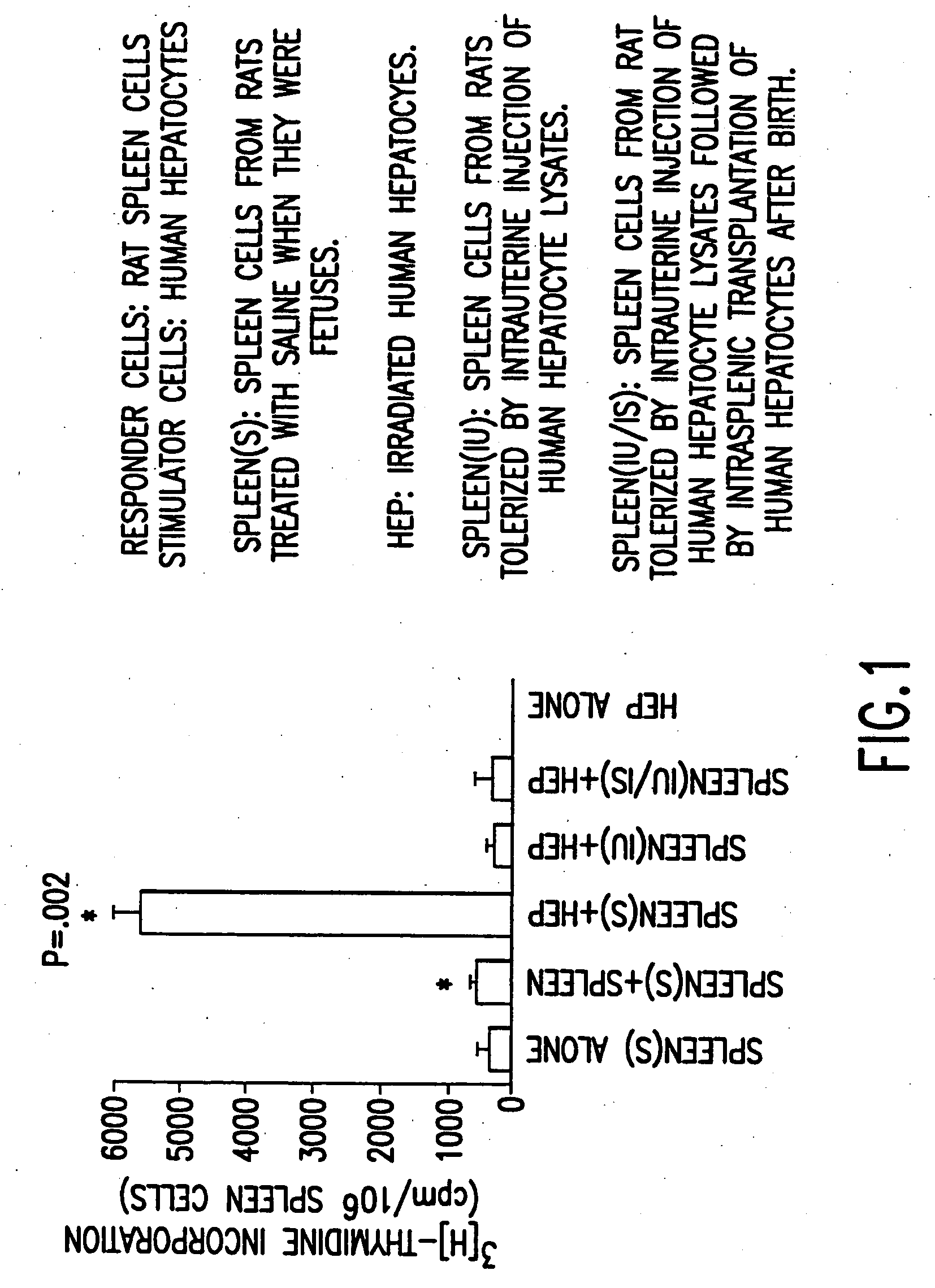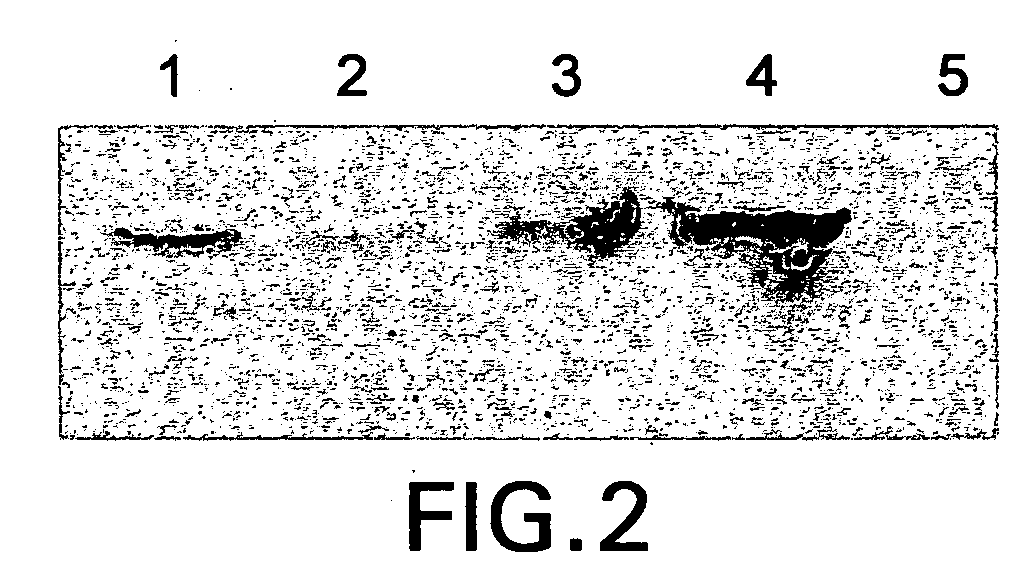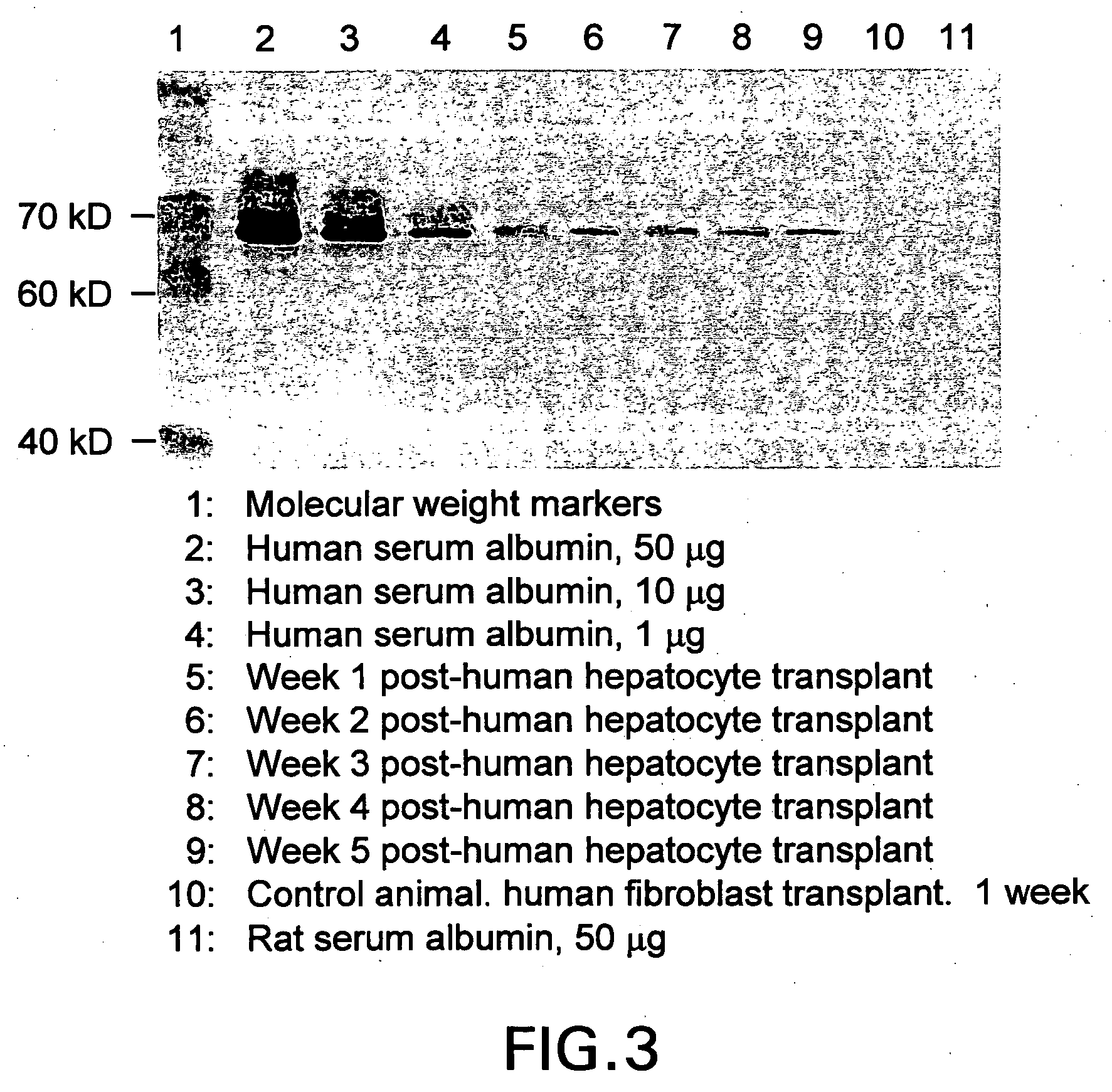Propagation of human hepatocytes in non-human animals
a technology of human hepatocytes and livers, applied in the field of human hepatocytes in the livers of non-human animals, can solve the problems of hepatocyte normal functions, hepatocyte loss, and difficulty or impossible to study the normal functions of hepatocytes and their response to chemical or biological agents
- Summary
- Abstract
- Description
- Claims
- Application Information
AI Technical Summary
Benefits of technology
Problems solved by technology
Method used
Image
Examples
Embodiment Construction
[0057] The present invention relates to tolerized non-human animals having chimeric livers comprising human hepatocytes, methods for preparing such animals, and the use of such animals either as model systems for assaying toxicology or studying human liver disease or as sources of human hepatocytes for re-introduction into a human host. For purposes of clarity, the description of the invention is presented as the following subsections:
[0058] i) producing animals having chimeric livers;
[0059] ii) toxicology model systems;
[0060] iii) model systems for liver diseases; and
[0061] iv) chimeric animals as a source of hepatocytes for liver reconstitution.
[0062] The subject animals of the invention are referred to herein alternatively as "non-human animals having chimeric livers" or simply "chimeric animals". Both these terms are defined as tolerized non-human animals having livers which comprise human hepatocytes.
[0063] A "human hepatocyte" as that term is used herein may be a primary hepat...
PUM
| Property | Measurement | Unit |
|---|---|---|
| volume | aaaaa | aaaaa |
| volume | aaaaa | aaaaa |
| volume | aaaaa | aaaaa |
Abstract
Description
Claims
Application Information
 Login to View More
Login to View More - R&D
- Intellectual Property
- Life Sciences
- Materials
- Tech Scout
- Unparalleled Data Quality
- Higher Quality Content
- 60% Fewer Hallucinations
Browse by: Latest US Patents, China's latest patents, Technical Efficacy Thesaurus, Application Domain, Technology Topic, Popular Technical Reports.
© 2025 PatSnap. All rights reserved.Legal|Privacy policy|Modern Slavery Act Transparency Statement|Sitemap|About US| Contact US: help@patsnap.com



